Power Up Anywhere With These Editor-Approved Solar Chargers
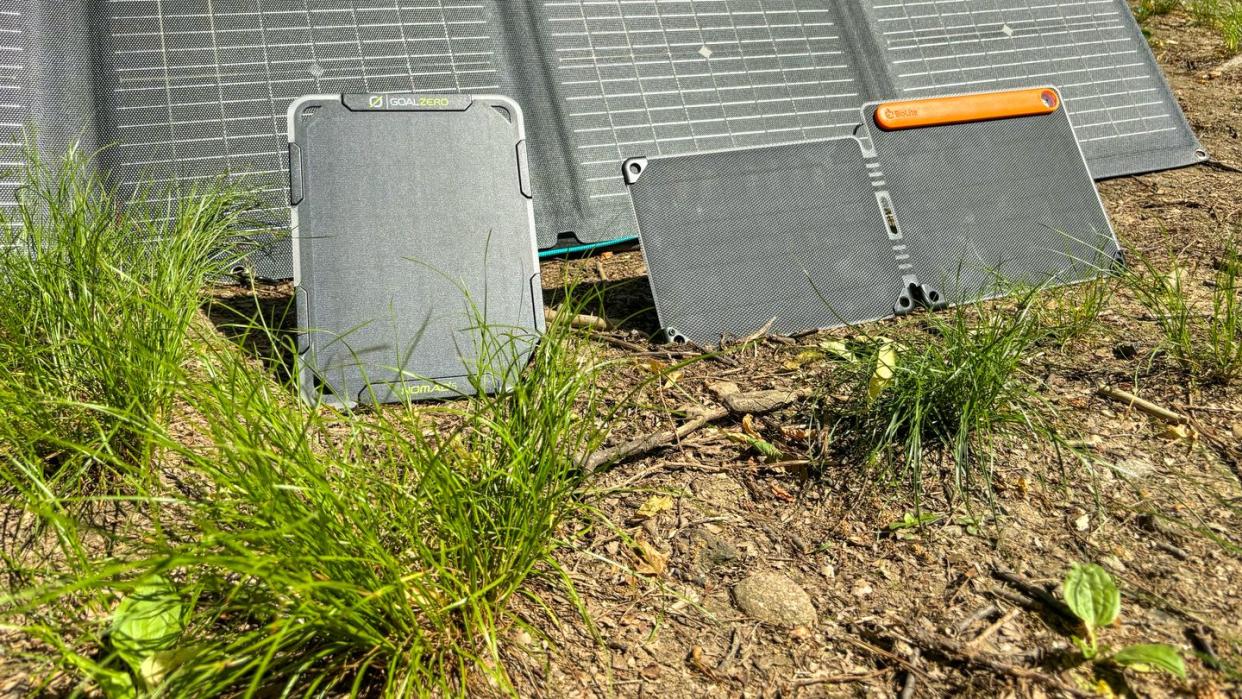
"Hearst Magazines and Yahoo may earn commission or revenue on some items through these links."
When you’re camping, backpacking, taking long day hikes, or simply sitting around your fire pit in the backyard, the closest outlet is likely farther away than your power cable can stretch. Pack a solar charger for the trip and suddenly you’ve got the world back at your fingertips.
These portable gadgets marry solar panels with battery packs—they’re small and lightweight enough to not add much heft to your pack and powerful enough to juice up your phone, headlamp, and other small tech. Many solar chargers come with ports to plug your devices in directly, while others fill up separate power banks you can store in your pack.
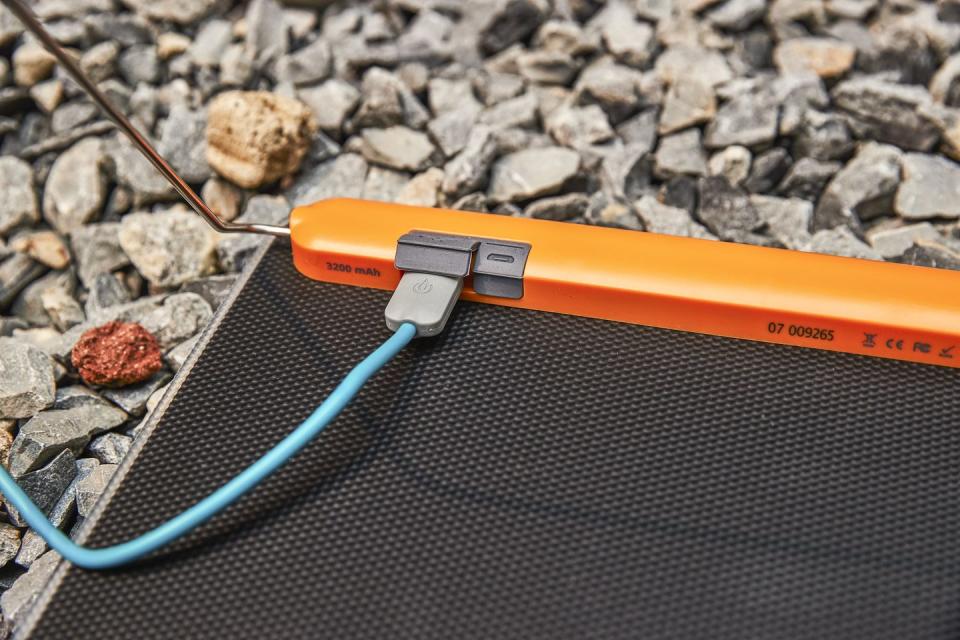
On a months-long road trip in your RV, a camping trip in the woods, or just a quick hike a few miles from your home, these keep your devices juiced up and you connected to the world. We’ve tested a bunch and researched many more to recommend the best solar chargers for you here.
The Best Solar Chargers
Best Overall: BigBlue SolarPowa 28 Solar Charger
Best Value: Goal Zero Nomad 5 Solar Charger
Best for Backpacking: BioLite SolarPanel 10+ Solar Charger
Best for Car Camping: EcoFlow Bifacial Foldable Solar Panel
Best Built-In Charging Ports: Jackery SolarSaga 40W Mini Solar Panel
What to Consider
Power Output
Power output refers to how many watts of power the panels generate when operating efficiently (a.k.a., angled toward the sun in direct sunlight). The solar panel’s output determines how quickly you can charge up your device or battery, how many devices you can plug in at once, and how large of a battery the panels can power.
The wattage on your solar panels range anywhere from around 5 watts to 400 or more. Low wattage options of 20 or less are typically much smaller and are great for charging phones or small battery packs. We don’t recommend panels below 5 watts of output for just how little power they provide.
High-wattage options, which are typically larger to suit more panels, are built to handle more devices simultaneously or charge large solar generators. These typically have multiple ports for different types of cables and fold out, revealing multiple panels.
Keep in mind that all wattages listed for a solar charger represent the most power the panels can put out—in many weather conditions and panel configurations, you’ll net slightly less than this peak number. If the solar panel comes with an onboard battery, the output through the battery will be more consistent and not dependent on weather conditions.
Power Storage
Some solar chargers come with built in power storage that keeps a portion of the energy captured in a battery connected to the panels. This means that you should be able to charge your phone for a while even after the sun has set and there isn’t access to direct sunlight.
Many other options come with power banks or add-ons that are designed so that you can use them in tandem with the solar panels. Additionally, if you don’t want or need to juice devices immediately but need more storage than the onboard battery can accommodate, larger solar panels can charge up solar generators and power stations. (Many of those generators are built to charge up via wall outlets and/or solar panels, so they aren’t solely reliant on either.)
Portability
If you want to carry your solar charger with you while hiking or camping, portability is key. There are tons of options that are light enough to tote around all day and small enough to fit in a backpack.
The tradeoff with smaller solar chargers is reduced overall output, and if the weather conditions aren’t right, it can be a challenge to recharge with a small panel.
Foldable designs pack down without sacrificing power output. Many large chargers that are too big to fit in a backpack come with carrying cases for easier transport.
How We Tested
Out in the wilderness, dead devices are a mild inconvenience at best and a survival liability at worst. To ensure we can stand reliably by our choices, we tested out multiple solar chargers ourselves: the EcoFlow Bifacial Foldable Solar Panel, Goal Zero Nomad 5 Solar Charger, and BioLite SolarPanel 10+ Solar Charger. We gauged each not just on its power (which obviously differed based on the model), but their versatility, durability, and portability.
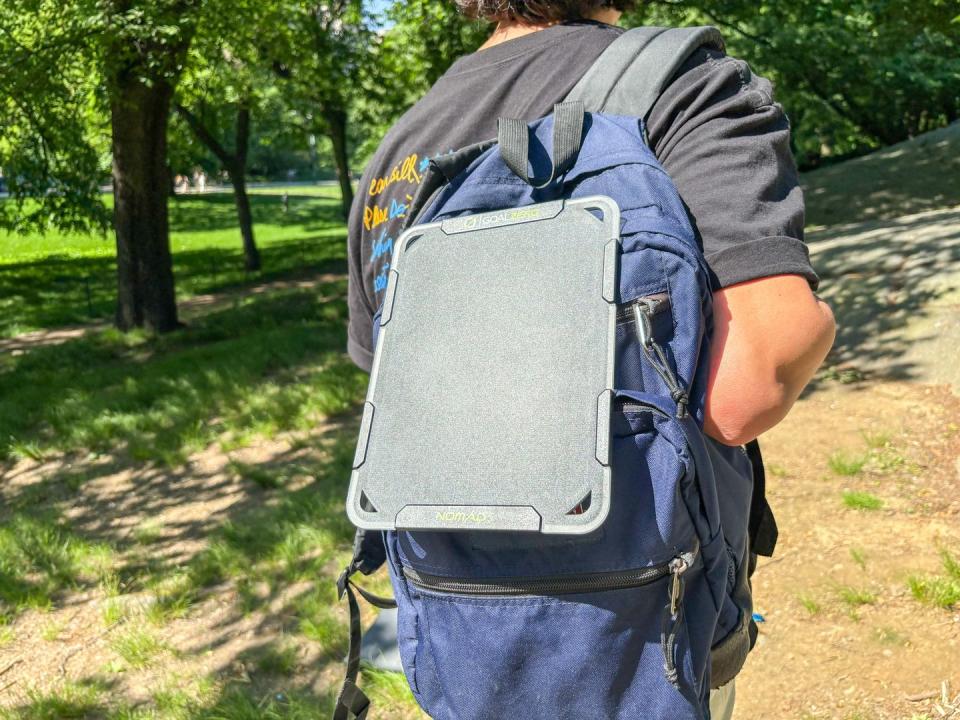
To do this, we carried each solar charger in our backpacks or in carrying cases for over a mile, utilizing the ports to directly charge devices and power banks. For smaller chargers which could be draped over a backpack, we plugged in smart devices and charged them as we walked. That said, the majority of our testing was done in a stationary location where all chargers could be used in near-identical conditions.
Most panels and chargers on this list claim high level weather resistance, so we tested this by spraying each in water and dirt, wiping them clean over and over again. We also kept devices plugged in to test if they continued to provide quality energy output when wet or partially covered in dirt. Each of the tested panels we included on this list, performed well under each of these circumstances.
Additionally, we researched 29 other models, evaluating them on their efficiency, output, portability, and overall effectiveness. We narrowed the list by comparing these key specs such as output, size, and port options, using our hands-on experiences with solar chargers to find the best designs and features.
To whittle the contenders down further, we relied on reviews from verified customers for real-life applications and any small features they liked or disliked as well as related solar content and articles from our team at Popular Mechanics. Our list of potential picks included portable solar panels and solar-rechargeable power banks, though we primarily focused on the former given their greater efficiency at converting sunshine into electricity.
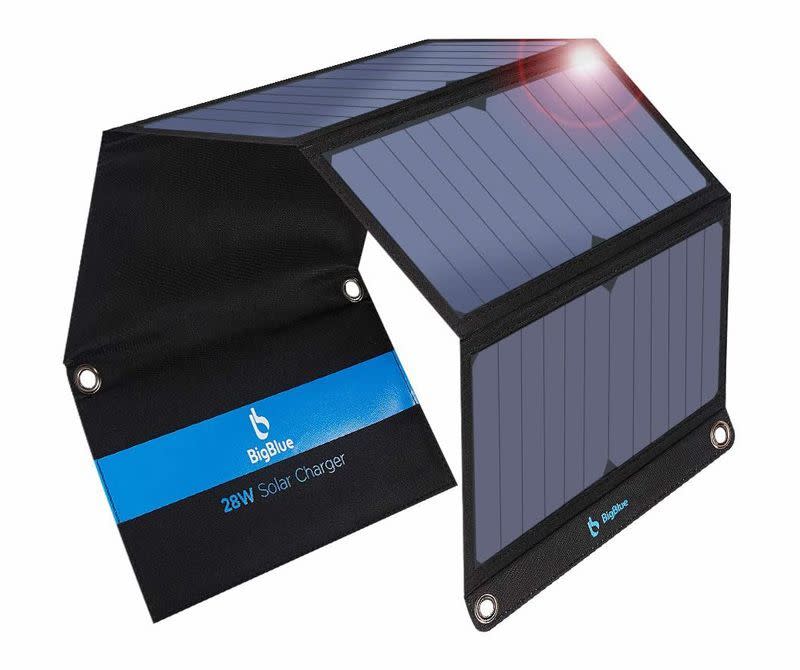
SolarPowa 28 Solar Charger
amazon.com
$72.99
BigBlue’s 28-watt solar charger checks a lot of boxes. It’s powerful, packable, and comes with three USB ports—a rarity in the category. It’s slightly smaller than a piece of printer paper when folded up, so it easily fits into a day pack. However, finding a sunny area that’s large enough for all four solar arrays to catch the light could prove difficult, especially if you’re in a forest. It unfolds to nearly one yard long.
Many users unfurl the panels over their backpacks as they walk for maximum exposure over the course of the day. The panels even come with small loops at the top and bottom designed for hooking to a backpack. Both individual customer reviews as well as the company itself mention this as a potential method of use.
The four panels lend the charger enough power to juice up three devices at once—just don’t expect the fastest performance when all three ports are occupied. Two standard 2.4-amp ports accompany one slower, 1-amp port that’s better suited to a headlamp or lantern than a phone or power bank.
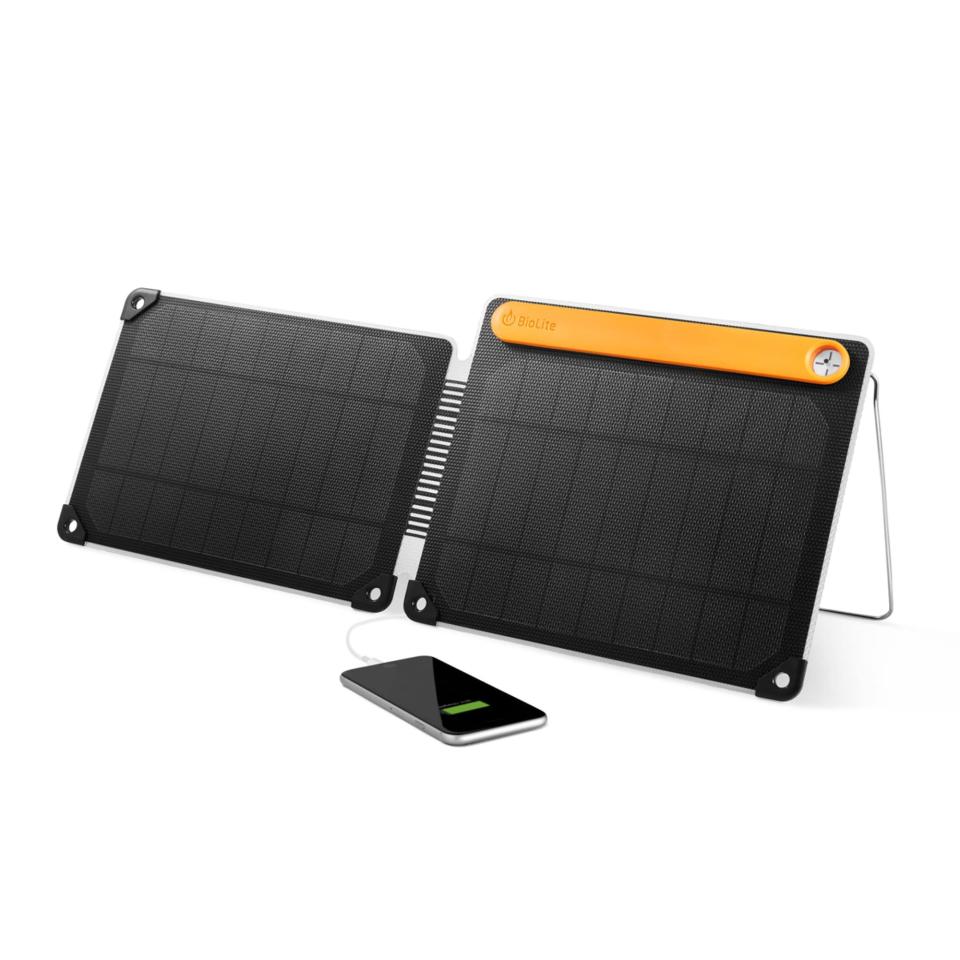
SolarPanel 10+ Solar Charger
amazon.com
$149.95
The first thing we noticed about BioLite’s SolarPanel 10+ is the economic size. This solar charger easily fits in a backpack when folded up, and it’s incredibly lightweight, at just over a pound. The folding design means that you don’t need a ton of extra space to get double the output of many options with similar footprints.
The SolarPanel 10+ shines for two major aspects: its internal battery and external power bank. The battery built directly onto the device doesn’t add much bulk. While it isn’t enough to charge multiple devices, it should power your phone for a few extra hours. And it automatically stores any unused energy for later in the day when the sun goes down, even if you don’t have a power bank.
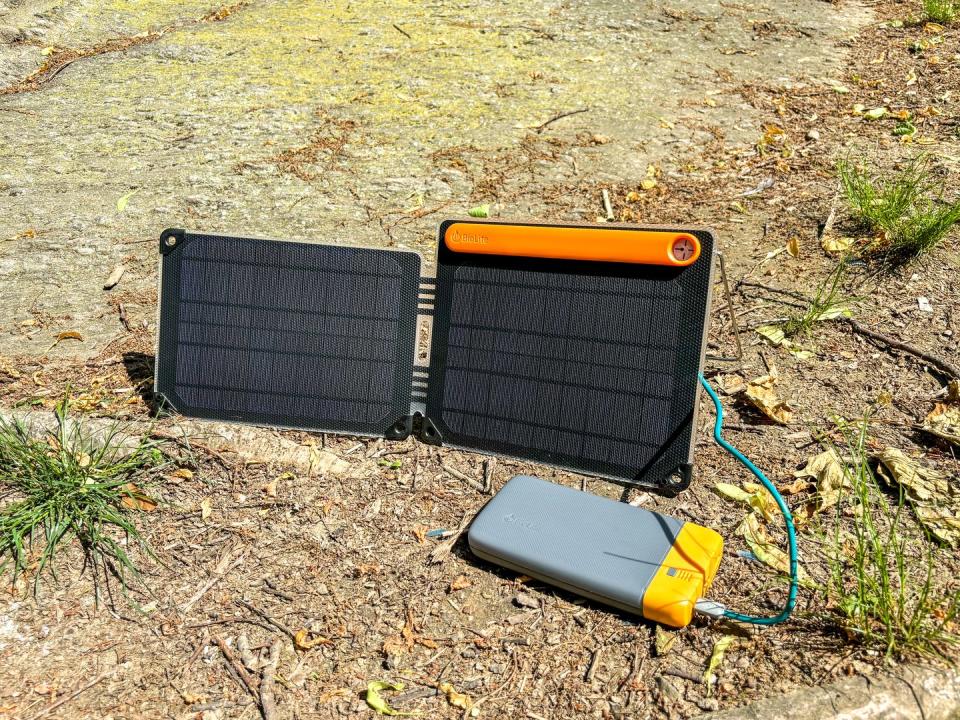
If the built-on, internal battery isn’t enough, BioLite also offers durable power banks that work seamlessly with the solar charger, though the bank adds a few extra pounds to your bag. Plug it in while the panels are in the sun and you’ll start storing power for when you need it most.
Another small feature that stood out to us was the built-in sundial. Instead of guessing at which angle to place the panels, we could simply adjust them based on the sundial’s shadow for optimal gathering of sunlight all day long. This helps the panels work as close to maximum output as possible.
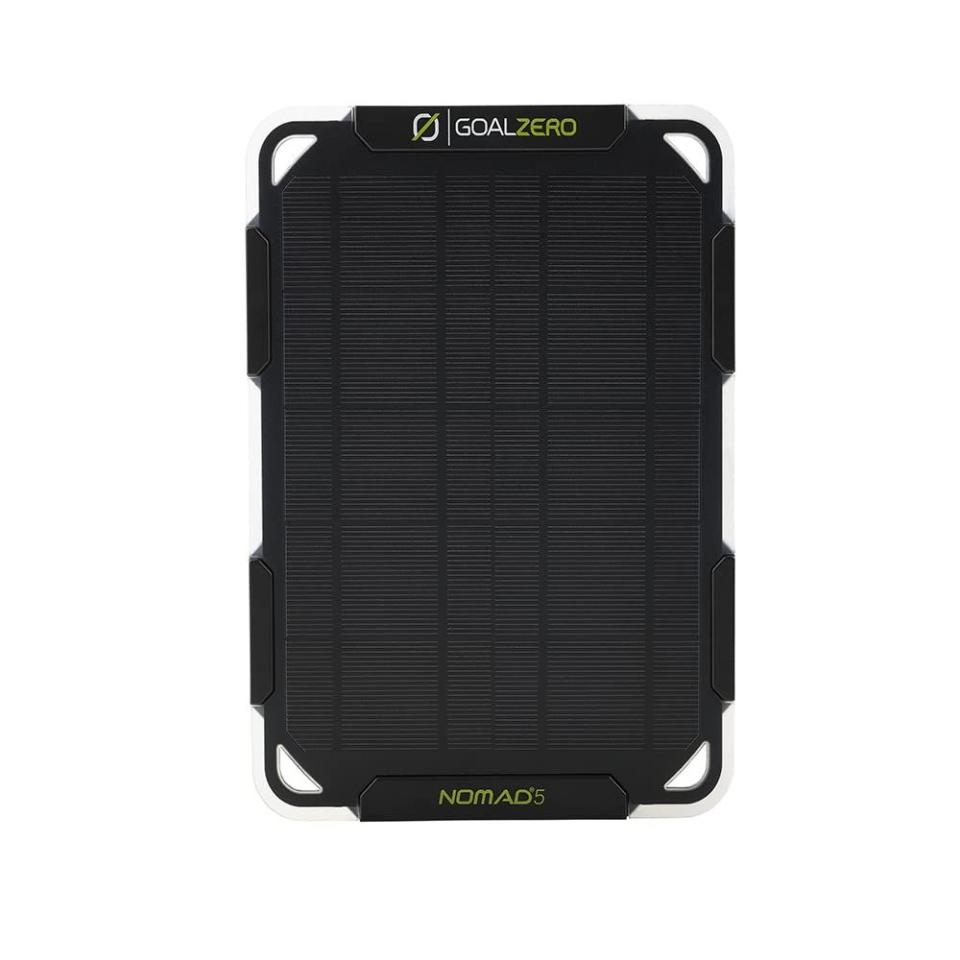
Nomad 5 Solar Charger
amazon.com
$59.95
When it comes to portability and value, very few options offer what the Nomad 5 solar charger from Goal Zero offers. It weighs less than a pound, so we barely felt the weight of this charger in our backpack when walking around. And the size gives you about the smallest footprint possible while still providing ample power to charge devices in the moment.
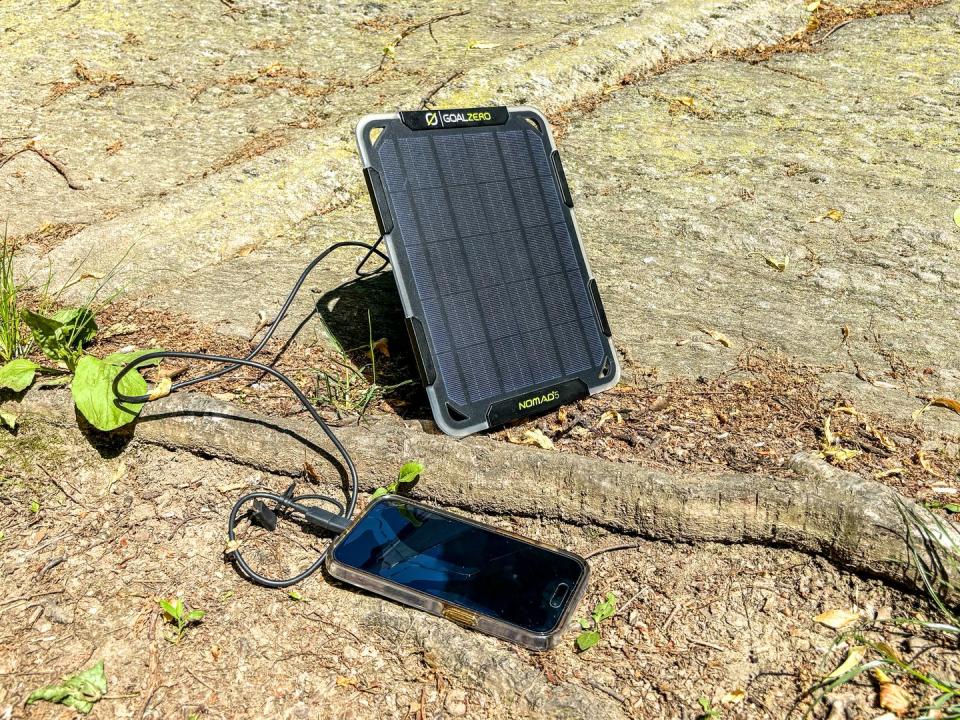
Beyond the impressive portability, the Goal Zero solar charger is a noticeably sturdy device. We (admittedly) dropped it multiple times without causing any damage and, more importantly, the panel itself stayed pristine. This was also the case after a heavy sprinkle of water. Even doused in our simulated rain, a few wipes with a loose cloth and the panel was as good as new.
While it isn’t necessarily chock full of exciting added features, we appreciate the Nomad 5’s adjustable kickstand, which can help you angle the solar panel to capture as much sun as possible. The kickstand is made with a thin, centered style that adjusts up to 180 degrees, making it great for sliding on a backpack loop for charging your devices as you walk (but be careful—solar panels get hot!).
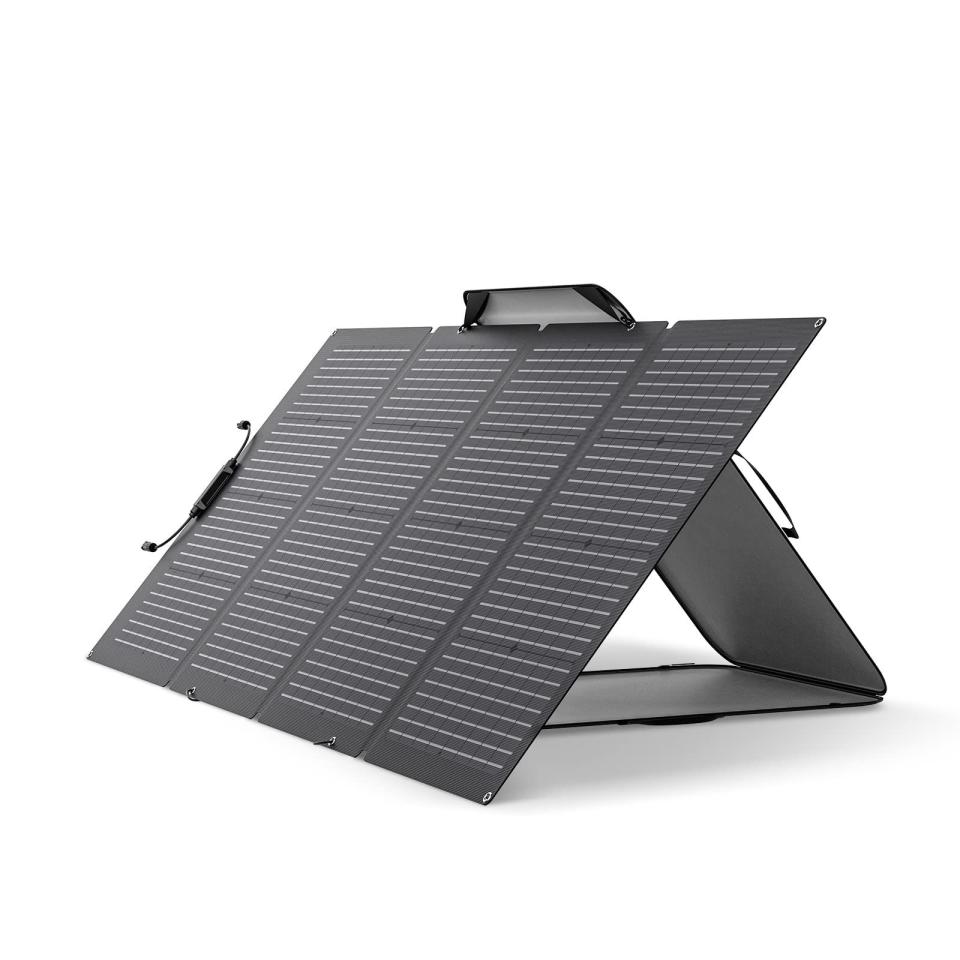
Bifacial Foldable Solar Panel
amazon.com
$549.00
EcoFlow’s Bifacial solar panel stands as the best option for heavy-duty charging. While too large to carry with you on a hike, it’s perfect for car camping. The panels fold out pretty comfortably, and when it’s at maximum output, it provides over 220 watts of power. This is more than enough to charge multiple devices at once using the integrated USB ports. The solar charger also comes with a carrying case that allows for handheld travel.
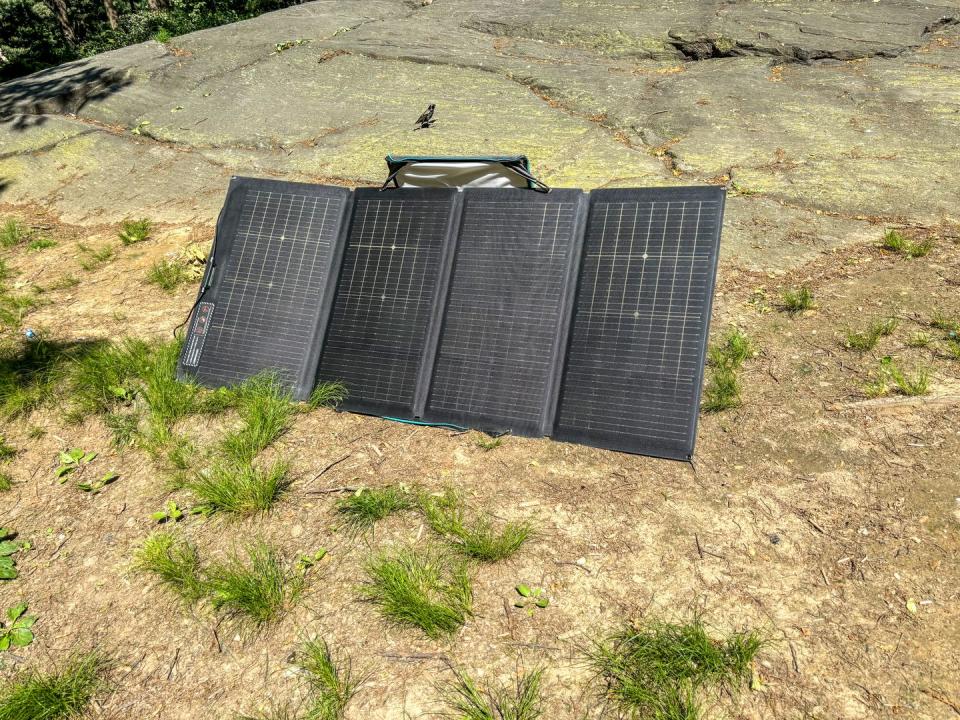
The panels certainly didn’t feel light in my hands, but was more than manageable for a mile or two. What makes the case unique in comparison to many others is that it doubles as an adjustable stand for the solar panels. By hooking the case to the solar charger, you can angle the panels to consistently take in as much sun as possible.
While it took us a try to get it right, the case stand was fairly easy to assemble. And we could adjust it comfortably as the angle of the sun changed.
The biggest downside on the solar charger also serves as a major upside. The panels must be connected to a power station or solar generator if you want to store a charge, and the output is far too high for a small portable battery. Luckily, EcoFlow has a several large power stations that are compatible with this panel. The higher output means these power stations charge up relatively quickly and store a lot. When full, the generator has enough power for charging small devices all night long or even powering large devices and appliances for multiple hours.
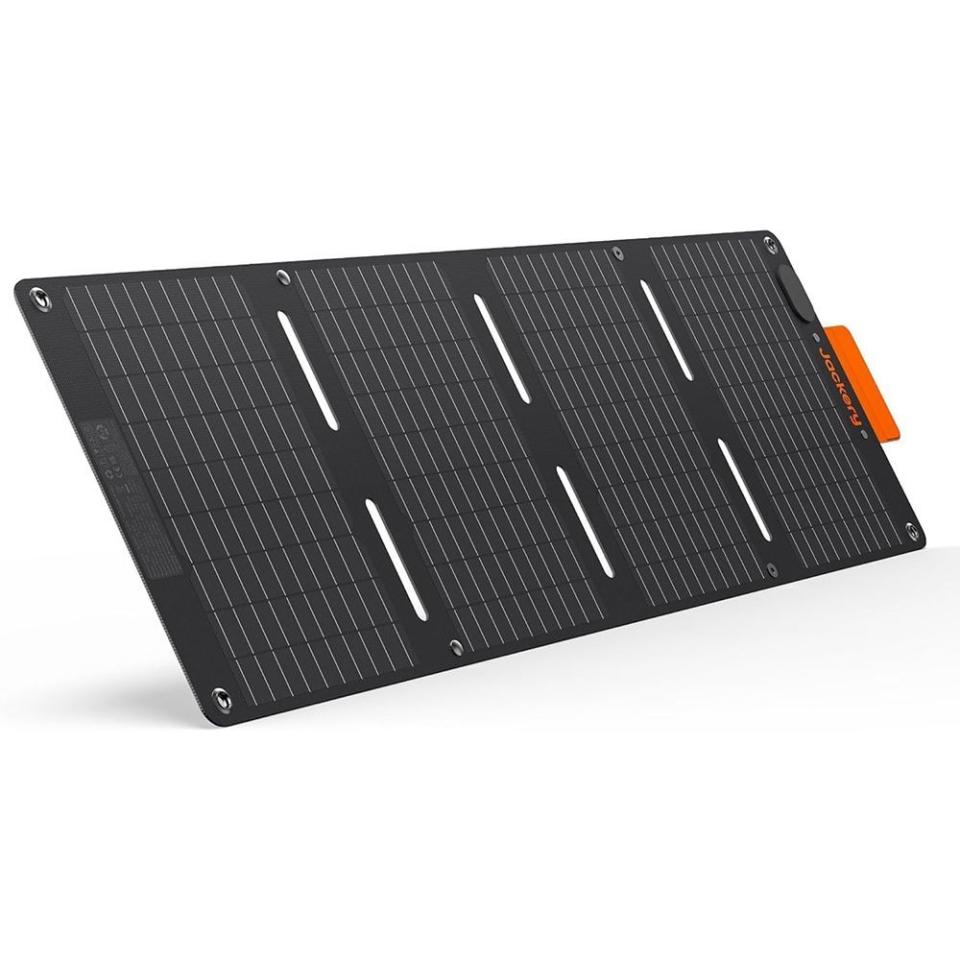
SolarSaga 40W Mini Solar Panel
amazon.com
$129.00
At 40 watts, this solar charger from Jackery balances power with lightweight portability. The folding design packs down to the size of a book for easy storage and unfurls into 40 inches of sun-absorbing panels.
The solar charger’s plug also comes with two ports on the side of it. So, instead of plugging into a power station, your USB-C or USB-A devices plug directly into the cord.
Another perk is that the charger’s plug connects directly to Jackery’s portable power station and slightly larger portable solar generator.
With a 40-watt output, it’s the sweet spot of added power without being so bulky that it weights down your pack throughout the day. At maximum output, it charges an iPhone in less than three hours.
Each Jackery panel is rated IP68 for extreme dust- and water-resistance. That means you can feel comfortable taking it with you to hike or camp, and even set it up in snow.
You Might Also Like

